Installing a siphon on a bath: how to properly assemble and install a siphon
In the field of protecting the bathroom from the penetration of unpleasant aromas and gases from the collector, the correct installation of a siphon on the bath is of great importance. This is a kind of buffer between the bathing tank and the sewer.
Its purchase should be preceded by an analysis of the main criteria that affect competent choice. In this material we will talk about popular varieties of siphons, we will figure out how to choose this device. And also we will tell you a few secrets of installing these plumbing devices.
The content of the article:
Types of siphons for bathtubs
Among modern siphons, 4 of their types are most often found: corrugated, knee or tubular, with a bulb, flat. Properly selected both in design and in the material from which it is made, the siphon will ensure reliable and long-term operation.
Pros and Cons of Corrugated Siphon
Among the listed types, the design of the corrugated siphon is the simplest. It consists of 2 main nodes - a slightly curved outlet and a pipe with a frame.
Easy installation is the main advantage of the device. Corrugated pipe can be placed in any plane. Its disadvantage is that if, in the event of clogging, it is necessary to clean such a siphon, then this will need to be done manually, having previously dismantled the structure.
Independently form and water seal. Use this type if the sewerage has non-standard execution.
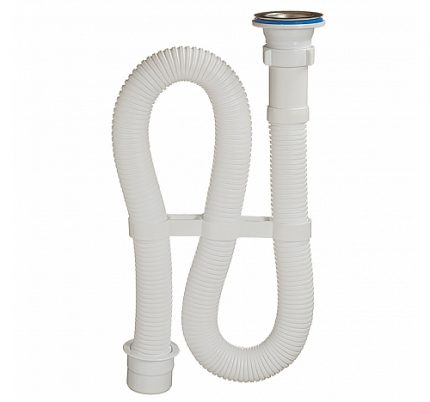
In the “pure form”, the corrugated siphon, which forms a water seal by simple bending of the pipe, is not installed under the bathtub. Such a solution would threaten the frequent formation of congestion and would not please the complexity of cleaning:
Tubular siphon
The shape of the rigid structure resembles a horseshoe or letter S in a horizontal arrangement. The barrier to the spread of unpleasant odors from the sewage system is water, which is constantly present in the bend of the pipe.
High-quality siphons have a stopper at the bottom of the knee to facilitate cleaning. If there is no such detail, it is difficult to free the system from accumulated debris.
Metal siphons are part of expensive plumbing. In such systems, designers never use plastic. They are made of brass, bronze or stainless steel. The first 2 materials are oxidized if they are not coated with a special composition.

Siphon with flask or bottle
Siphons with a flask are most often used for installation under the sink and less often under the bath. It got its name due to the presence of a kind of bottle for the accumulation of water. The flask is installed exactly opposite the drain hole, connecting by means of a rigid or corrugated tube.
If the drain pipe is flexible, a bottle siphon is used regardless of the location of the sewer entrance. Hard drain suitable for installation in the bathroom under the washbasin.
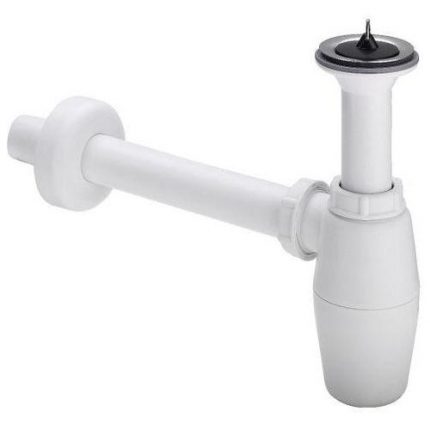
Modern flat siphon
This type of siphon is similar to knee or pipe devices. The difference is in the presence of a water trap and a horizontal flat outlet designed for the accumulation of garbage.
Before installing this siphon under the bath, you need to take into account that it can be applied only when the collector connection is horizontal.
The advantage is quick installation and the possibility of convenient pipe cleaning. Separately to such a siphon, you can purchase a special drain net. This will further protect the system from small debris entering it.
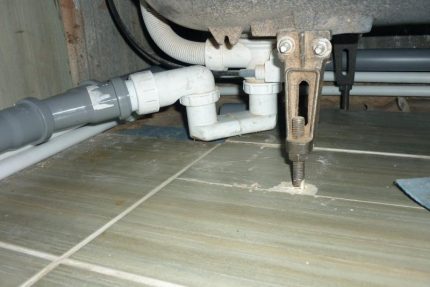
Siphon classification by drain design
By design, all siphons can be divided into the following types:
- Mechanical. They have a plastic or rubber plug for the possibility of blocking the drain channel. Here, all the manipulations are performed without the use of any levers and automation - manually. The device is very simple, therefore, has a long service life.
- Semi-automatic. This is a complex structure with a shut-off valve, which is controlled by cable or lever mechanisms. Such adjustment is usually placed at the overflow hole above the water level. The reliability of this type of strapping is somewhat lower due to the presence of a number of moving parts and assemblies.
- Automatic. In this case, the siphon is included in the same system with the filling device. The built-in microprocessor manages everything. The system includes an easily controlled Click-clack valve.
Automation allows you to fill the bath with water at a given temperature and maintain it. When the temperature decreases, the water is drained and the bath replenishes with warm water to the set volume.
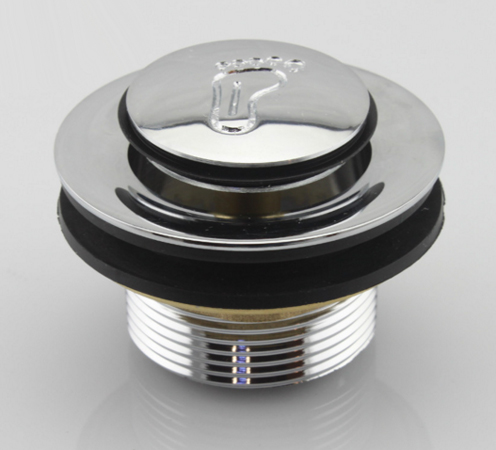
The click-clack design includes a locking cap fixed to the pin. It rises when a certain water column presses on it and forms a gap through which excess water flows. Automatic siphons are made from non-ferrous metal alloys.
Semi-automatic siphons are produced in 3 versions. In the first, the overflow hole is opened by pressing the drain plug. To remove the used water, simply press the lid and activate the overflow plug.
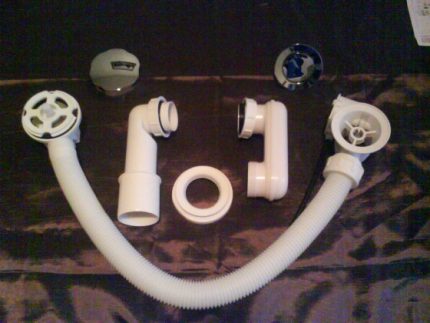
The design of the semi-automatic siphon includes a special handle with a plug function for the overflow hole. To open or close it change the position of the handle. The cork is equipped with a special mechanism, by clicking on which you can both open and close the drain. Over time, the quality of work decreases due to the formation of a calcareous layer.
If a washing machine is installed in the bathroom, then to connect it, the siphon must be metal, because Plastic may not withstand high temperatures. We also recommend that you read the installation nuances. siphon for washing machine.
When choosing a siphon, you should not proceed from the design of the product. The first thing that a siphon should provide is an uninterrupted operation aimed at high-quality drainage of sewage into the collector.
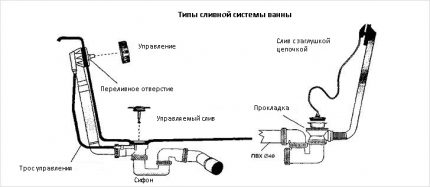
How to assemble and connect a siphon?
To connect to the sewerage of the bathroom, as in the case of any other plumbing fixture, it is necessary to assemble the siphon. Devices go on sale in kits where all parts are scattered.
Installing the simplest type of siphon for a bath bowl includes a number of standard steps:
To know how to assemble any model of bath siphon, you need to study the assembly diagram. It is identical for all types.
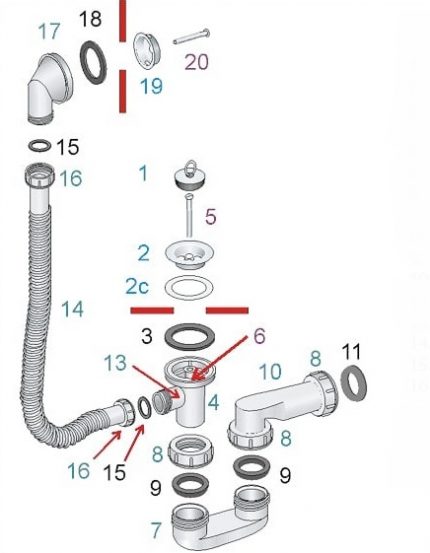
The assembly technology is as follows:
- Unpack the new siphon and check the quality of the threaded connections. Chips and burrs are not permitted. Before assembling, you need to arrange the parts in the order in which they will be connected in the future.
- A cork is attached to the overflow pad by means of a chain.
- Mount the protective grille and flexible rubber gasket onto the drain hole.
- A gasket is inserted into the upper part of the branch pipe, then the pipe is pressed against the body of the bathtub so that the gasket takes the desired position and lies as tight as possible.
- With the other hand, insert the connecting screw into the grate and fix it with a nut using a wide screwdriver.
- A plastic coupling nut is put on the nozzle. A conical rubber seal is installed under it, turning the wider side to the nut.
- Insert the pipe into the knee and tighten the nut until it stops.
- A cone gasket is inserted into the coupling nut and the elbow is connected to the adapter. Using the adapter, the height of the siphon can be adjusted.
- Insert the gasket into the opposite nut of the adapter and connect the latter to the drain of the sewer.
- Corrugation is attached to the overflow outlet through a flat or cone-shaped gasket and a coupling nut.
- The corrugation is joined with the overflow pipe by means of another nut with a gasket through the bathroom body.
- A gasket is fixed to the top of the overflow pipe.
Not a single extra part is included in the kit. When something remains after assembly, it indicates that some point has been missed. If the siphon connections are leaky, leaks may occur. To prevent this, coat the joints with sealant.
In the process of connecting a semi-automatic siphon, a lamb is installed, with the help of which the drain plug is controlled. The lamb is placed on the overflow hole by connecting a pre-corrugated pipe to it from the back of the bowl:
Strengthen the threaded connection by winding tow or silicone tape. A paste is applied over the windings and the parts are pulled up.

Only one seal should be in one connection. Reinsurance by installing two gaskets leads to the opposite effect - the tightness of the joints is broken. Mounting nuts and gaskets must not be overloaded, but maximum tightening can damage parts. It is better to tighten the nuts not with a wrench, but manually.
Also on our site there are other articles in which the process of connecting siphons to various plumbing is described in detail:
- Wash-basin siphon: types, selection criteria + assembly rules
- Installing a siphon in the kitchen: how to assemble and install a device + circuits and installation example
- Siphon for shower tray: design, purpose, installation features
- Siphon for washing: design, purpose, do-it-yourself installation features
- Siphon for a shower cabin with a low pallet: types, selection rules, assembly and installation
Features of the assembly of a semi-automatic siphon
The assembly of a semi-automatic siphon is complicated by the presence of additional parts. At the top of the tubular structure is a stainless steel control rod. Fix it with 3 screws of the same material. Here is the aerator.
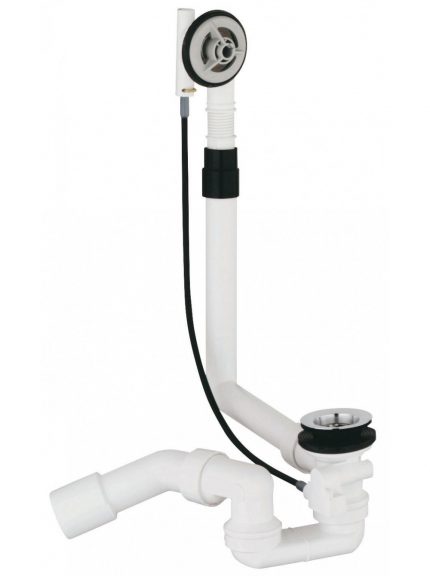
To install it requires a minimum of space. Only the siphon head is visible from above. Water is supplied from the side by means of a threaded connection.
Semi-automatic tubular siphon has a good throughput, a reliable water seal. A high-quality device is designed in such a way that water never drains down the wall of the bathroom.
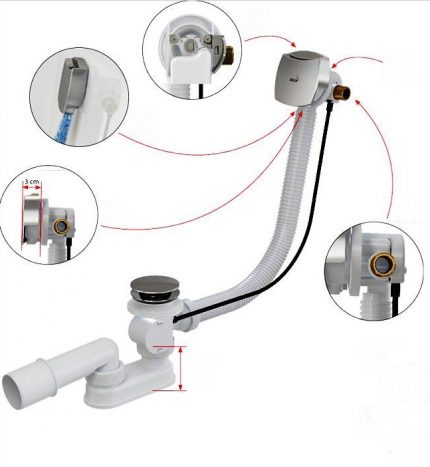
Assembly is performed according to the following scheme:
- The pipe for the collector is joined with the central overflow, pushing the pipe all the way. The gasket at the junction is already installed, so you do not need to insert anything else.
- A metal filter is also mounted on the overflow, having previously installed a double seal on the drain.
- Metal covers of a flat shape are connected to the movable adjusting cable, and then they are fastened to the drain hole. The assembly is connected to the overflow by means of a bolted connection.
The joints must be provided with appropriate gaskets - the side ones with an ordinary thin sealant, and the central one - with a butterfly gasket.
Connection reliability check
Having installed the siphon, it is necessary to carry out a verification check of all joints. To do this, fill the bath with water to make sure that the drain neck is attached correctly. If there is no leak in this place, then there were no errors during installation.
The remaining connections are checked for reliability by removing the plug from the drain. If leakage of liquid is detected at some point, the bath is completely freed from water. After this, the joint is disassembled and reassembled, paying particular attention to the position of the gaskets and nuts.
According to professionals, the cause of the leak is most often a skewed nut connection or insufficient tightening.
Some helpful installation tips
Before assembling and installing the drain device, you need to check the level of the bathroom, the diameter and position of the drain pipe. Then you should read the instructions to take into account all the possible nuances.
When installing the appliance on an old metal or modern acrylic bath, drain holes are checked. If roughness is found on them, they are eliminated with an emery cloth.
With a rough discharge, it is impossible to ensure a tight fit of the siphon to them.Before final tightening of the device, it is necessary to check the correct assembly; laying requires special attention. Often they move, so it is better to apply a special sealant to them.
Proper drainage is ensured by the correct slope of the pipe. The drain pipe must be directed directly to the manifold. If the siphon is equipped with several inlets for branching the drain into the collector, but they are not intended to be used, you should plug them with a special nut.
When buying a siphon, its important characteristic is the quality of the material, and if it is plastic, then the main thing is the wall thickness and processing technology. The denser the walls of the drain, the better it will resist loads.
On cast-iron drainage, the presence of cracks, even disguised, is unacceptable. If such defects are found, it must be replaced. The surface of the brass siphon must be absolutely smooth, otherwise it will often have to be cleaned.
To avoid leaks, the seals on the drain change on average 1 time every six months, and those that are installed between the nozzles - every 3 months. To prevent scale deposits on the walls, every few months it is advisable to rinse the device with hot water with an addition in the form of citric acid.
If chemical cleaners are not contraindicated for the material, then you can use Mr. Muscle, Ruff, Phlox, and the like.
Conclusions and useful video on the topic
Author's workshop on installing a siphon:
Save time spent tying the bathroom by viewing this material:
A correctly mounted siphon is a guarantee of comfort and peace of mind. Hurry with its independent installation is inappropriate. If even after reading the detailed instructions, there are unclear points, it is better to turn to professional plumbers.
If you have personal experience installing a bathroom siphon, please share your knowledge with our readers. Maybe you also have your installation secrets? Write your comments, ask questions in the block under the article.

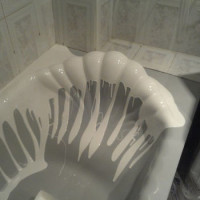 Restoration of bathtubs with liquid acrylic: how to properly cover the old bathtub with new enamel
Restoration of bathtubs with liquid acrylic: how to properly cover the old bathtub with new enamel 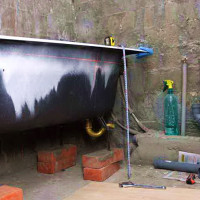 How to install a bath on bricks: step-by-step instruction on how to install
How to install a bath on bricks: step-by-step instruction on how to install 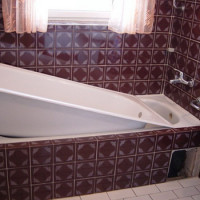 How to install an acrylic insert in the bath: insert installation instructions
How to install an acrylic insert in the bath: insert installation instructions 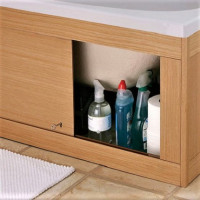 Sliding screen for the bath: step-by-step instructions for assembling the factory design + tips for craftsmen
Sliding screen for the bath: step-by-step instructions for assembling the factory design + tips for craftsmen 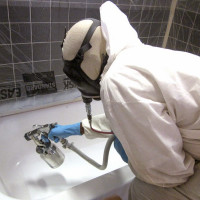 How and how to paint a cast-iron bath: an overview of the best restoration methods
How and how to paint a cast-iron bath: an overview of the best restoration methods 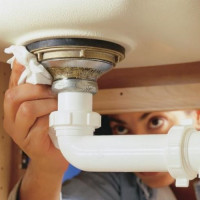 How to install a bath yourself: a step-by-step installation guide
How to install a bath yourself: a step-by-step installation guide  How much does it cost to connect gas to a private house: the price of organizing gas supply
How much does it cost to connect gas to a private house: the price of organizing gas supply  The best washing machines with dryer: model rating and customer tips
The best washing machines with dryer: model rating and customer tips  What is the color temperature of light and the nuances of choosing the temperature of the lamps to suit your needs
What is the color temperature of light and the nuances of choosing the temperature of the lamps to suit your needs  Replacement of a geyser in an apartment: replacement paperwork + basic norms and requirements
Replacement of a geyser in an apartment: replacement paperwork + basic norms and requirements
I had tubular siphons in my old apartment. They were short-lived, had to change quite often. When we recently built a private house, I already put corrugated here. They are stronger and even sit better initially. In theory, they should be much more durable. But, as they say, everything needs to be checked in practice. Plus, a lot may depend on the manufacturer.
And I think that tubular siphons are the best. Yes, they need to be changed more often, yes, they are less durable and so on, but if something happens, it is easiest to return objects accidentally washed away by a jet from it. And do not forget that at the same time it is the cheapest of the presented and generally existing siphons. Of course, it’s hardly suitable for the hidden option, but it’s just tubular in our usual apartments.
Which is the cheapest?
If you need an inexpensive bath siphon, then I recommend considering options for Russian and Ukrainian production. This is an acceptable build quality for siphons at an adequate cost.
Here are some simple, inexpensive, and practical options:
1. Siphon for bathtub Orio A-60089 - production Russia, wet water seal without a membrane, there is overflow;
2.Siphon for bathtub Water House SV 01- production Ukraine, wet water seal without a membrane, there is overflow;
3. Siphon for bath SoloPlast R-0110 - production Ukraine, wet odor trap without a membrane, there is overflow.
The cost of these models is about $ 6.